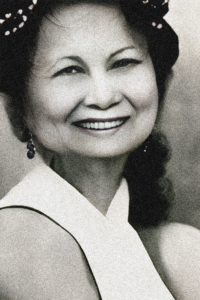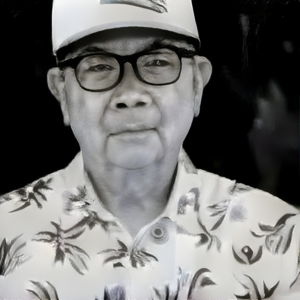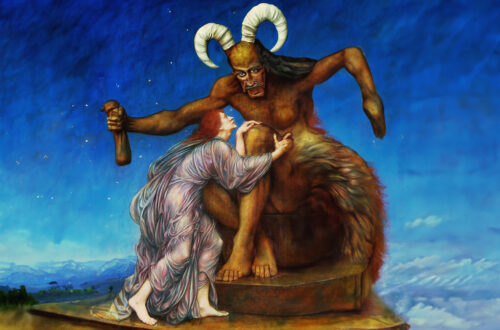
Ho’oponopono And Family Constellations
This somewhat specialised topic arises from time to time because ho’oponopono is increasingly used in the State of Hawaii by social workers in the form of family therapy.
Family Constellations, also called Systemic Constellations and Systemic Family Constellations, blends elements of family systems therapy and existential philosophy.
Although the process is known as a Family Constellation, it’s quite possible for friends, neighbours, teachers, and other members of the client/seeker’s community to be represented. In the systems approach, this is known as ‘The Minimum Supportive Network’.
A Family Constellation reveals an unrecognized dynamic between multiple generations within a family. By doing so, it also removes the detrimental effects of that dynamic by promoting confrontation and acceptance of historical facts.
Even if a person does not remember the original trauma, practitioners believe it may influence present-day difficulties.
When a family has suffered a trauma, whether it was murder, suicide, maternal death, early death of a parent or sibling, war, natural disaster, emigration, or abuse. This left an unresolved trauma.
A facilitator leads a group (workshop). Members of the group can then discuss an urgent personal issue. Constellations are generally set up by several members in each session.
As soon as the facilitator finishes an interview, he or she suggests a few individuals to represent the Constellation. Usually, they are a representative from the seeker’s family, a nationality, or a country, but sometimes they can also be abstract concepts, such as “depression”.
In the constellation, the person presenting the issue (seeker or client) asks members of the group to represent him or her in the constellation. He or she arranges those who will represent them based on what feels right at the time.
The seeker then sits down and observes.
A few minutes pass without any movement from the representatives. In contrast to psychodrama, the representatives are not acting, posing, interacting, or playing roles.
They know little or nothing about the people they represent. However, it is believed that representatives are influenced by their feelings or physical sensations.
The facilitator may ask each representative to briefly report how they feel being placed in relation to the others.
Facilitators, seekers, and group members may perceive an underlying dynamic in the spatial arrangement and feelings of representatives that influences their perceptions of the issue. This is similar to the structural family therapy method known as sculpting.
It’s well known by family therapists that families with multiple generations, traumas continue to affect the living even after the original perpetrators or victims have died.
In most cases, the issue is resolved after the representatives are repositioned and key members of the system are added. There has been a tendency to forget these members of the family or to write them out of the family history.
The facilitator may suggest one or two sentences that need to be spoken aloud when all representatives feel comfortable in their seats and the other representatives agree.
Representatives can move again or try a different sentence if they do not feel comfortable with their updated positions or sentences. This statement represents a possible solution to the seeker’s problems. A full resolution isn’t always achieved at the end of the process.
The seeker may “replace his/her representative in the Constellation” once the facilitator has experienced the healing resolution among the representatives. A seeker can then experience what it feels like to be part of a redesigned system. Constellation ends when everyone is comfortable in their place.
Significantly, Family Constellations are influenced by the traditional culture of the Zulu people of what is today South Africa. Nevertheless, many elements of the process echo the work of the psycho-dramatist Jacob Mareno, and also the work of Family Therapist Virginia Satir.
Critics of the approach are those who deny that which cannot be seen, or heard. In other words, they are rationalist scientists. In particular, they tend to object to the inclusion of Zulu culture as part of the method, as well as ideas about ‘morphic fields’ which are sometimes quoted in the literature and are based upon the work of Rupert Sheldrake.
Sheldrake’s concept of ‘a morphic field’ may be understood as an ‘energy system’ which gains in strength each time it’s used. For example, people tend to be able to learn the Morse Code faster than what (scientifically) should be a more intuitive arrangement of dots and dashes.
Ho’oponopono is also based upon a traditional native culture. In this case it’s Polynesian (or even earlier). Ho’oponopono translates as to correct an error. At first sight it may appear that the error that a ho’oponopono seeks to correct is a difference of opinion about certain matters.
In the early days when ho’oponopono was being developed it was thought to have been used by the Hawaiian Shamans (known as Kahunas) to settle disputes about fishing rights, water rights, and land rights. These tended to occur between tribes, or groups, rather than families and if left unchecked could lead to violence, murder, or even wars.
The Kahunas would take as long as they needed to resolve issues. Sometimes a dispute lasted for years, yet while they remained involved, they had sufficient authority to prevent matters getting worse.
In a sense, a ho’oponopono was a combination of a legal proceeding and a spiritual cleansing. I am sure that native kahunas (even today) might see some parallels between what occurs within a ho’oponopono, and what goes on in a family constellation. The theoretical backgrounds are not dissimilar. The application of the theory, however, is.
What’s different about ho’oponopono, however, is that it’s the Kahuna (Shaman) who cleans their perception of what’s been happening. I suspect that the traditional Zulu elders cited within family constellation’s literature also applied different filters to their consciousness, and so experienced ‘reality’ differently from how most Westerners do today.

Poe Poe
The Kahuna’s (most likely) differed in how they modelled the world from what’s common today. For example, Aunty Poe Poe describes how her grandfather (a traditional Kahuna who was relatively low in the hierarchy) was once approached by the son of a sick man who hated and constantly derided him. The son asked that he come to his father’s house and make peace with him before the father died.
Aunty Poe Poe’s grandfather refused to go, but said that he would pray for the man. Right at twilight as the sun was about to set, and there is a crack in the worlds between day and night the grandfather made his prayer. Aunty Poe Poe was amazed to hear it. Her grandfather asked forgiveness for whatever was in him that had caused the other man offence. As he cleaned himself, the other man was also cleaned. He recovered, and although the two men were never friends (remaining indifferent to each other) the difficulty between them (and also the other man’s health) was resolved.
This is interesting news because it demonstrates how in ho’oponopono there has always been a belief that our psyches are folded into each other. It’s not simply that there are AKA cords which act like a spider’s web, pulling and pushing us around with each thought, or action, another takes. It’s that somehow, we each live within each other. We dream each other up (if you like).


Hew Len
This perhaps explains why the originator of contemporary Westernised ho’oponopono (Morrnah Nalamaku Simeona), and her student (Dr. Ihaleakala Hew Len) worked on the assumption that if they cleaned up their perception, then any problem could abate (providing they had had a previous connection, either in a past life, or through their ancestors) with it.
Morrnah’s articulation of this idea isn’t as ‘revolutionary’ in traditional ho’oponopono circles as it seems to us. Where in contemporary ho’oponopono we talk of erasing ‘data’ as if it were information stored in the memory bank that is our subconscious, so the ancient Kahunas would speak of humans each having a basket. In the course of their life, they would collect rocks in it (the equivalent of data) and each individual’s job was to discard as many as possible, replacing the area vacated with white light.
That’s precisely what today’s model of ho’oponopono encourages us to do. It simply uses different language.
The Differences Between A Family Constellation And A Ho’oponopono.
A Family Constellation aims to provide the client/querent with information in the form of insights which will enable them to resolve old karmic problems. Ho’oponopono doesn’t, and never has, attempted this. Rather it seeks to remove the Data that has given rise to the problems.
The Kahuna really isn’t attempting to get at ‘The Truth’ or someone else’s interpretation of it. Certainly, they’re not seeking to gain a greater understanding of it themselves. They simply wish to be rid of their need to witness the problem. They achieve this by taking 100% responsibility for it, even though they may not have created it personally,
Indeed, a Kahuna may even feel that a poorly facilitated Family Constellation will simply rearrange existing data into a new formula for creating trouble. The Kahunas took their time to solve problems (and I suspect that the Zulus also did so). Back in the past, people had more time available to resolve their difficulties.
If you study some of the Family Therapy literature coming out of Scandinavia, you’ll also find that in the North of Norway, Sweden and Finland where the population is sparse, and time more plentiful, therapists stay with families for many days. It’s only in our busy Western world that we’re so limited by the pressure of time. The whole idea that some have that a Family Constellation may resolve the problems of multiple people in a single day appals me. But then, I spent a lifetime as a therapist before I discovered ho’oponopono.


You May Also Like

Ho’oponopono: An Inner Journey Beyond The Money Mantra

How To Be A Good Friend To Your Inner Child
